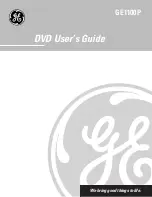
for a CD). This is down only 20 dB, which is 10 times
the value of the 40 dB in the fast mode. (Remember,
decibels are in logs; hence a doubling in decibels is a
10x increase.) Maybe a teenage kid can hear it. The
slow mode will make the ringing of the filter to an
impulse look better in the time domain but at the cost
of a potential audible effect, at least for teens. In
addition I note that no scientific study has shown the
ear is not sensitive to group-delay flatness.
In the 96-kHz mode, the rolloff moves from 42 kHz
to 28 kHz. The -3db point is constant at 48.9 kHz. In
the 96-kHz mode the first fold tone for 20 kHz is 78
kHz and this is well rejected with both fast and slow
filters (and your ears). In the 96-kHz mode, group
delay flatness is 14 times better than CD with the filter
in the same mode. As was the case for CD, the slow
mode makes things three times better. However, now
we are starting with very small variations in group-
delay flatness as a result of the reduced requirements
on the filter to have an extremely steep transition band
when the signal is sampled at 96 kHz.
The effect of the shape of the impulse response of
the filter in the time domain that results from moving
from 44 kHz to 96 kHz sampling is easier is to
appreciate directly in comparison to looking at group
delay curves vs. frequency. Some people I know who
are experts in sampled data systems (but not in audio)
say the reduction in the ringing before and after the
impulse might have some effect on the reconstruction
of signal in the time domain. Audio Engineering
Society conference papers have been presented giving
more details on this, but I have not seen them make it
to the society’s
Journal,
which critiques the materials
in greater detail prior to acceptance.
The fast and slow filter responses will change the
shape of the impulse. I have no recommendations on
which shape would be preferable. 96-kHz sampling is
such overkill that small details of filter rolloff become
inconsequential. From an engineering point of view,
that is a good thing. The difference between
reconstructing a signal at 96 kHz and reconstructing
it at 44 kHz is clear for all to see on a scope. Whether
the difference can be heard is still an open question,
but given a choice I will go for the thing that measures
well, if it does not cost me any more. In the case of the
hardware, the cost impact is small. Software costs are
still a major issue.
The bottom line with this DAC is that you lose
only a bit in comparison to the best. However, you
have at least an extra bit over the lower-cost universal
DVD players as well as the AV receivers I am currently
testing. The players I am currently testing are, under
worst case specs, just 16-bit engines. However, that is
all you need for CD playback, and that type of
performance in mid-line products would have been
impossible a few years ago.
Conclusion: at $450 this unit is a good deal without
question, assuming the analog stage is not messed up.
-DAR
T $ S
Excerpted with permission from The Sensible Sound, Is-
sue 104, July/Aug. ‘05. Subscriptions to TSS can be pur-
chased by calling 1-800-695-8439 or writing to: 403 Dar-
win Drive, Snyder NY 14226.


























